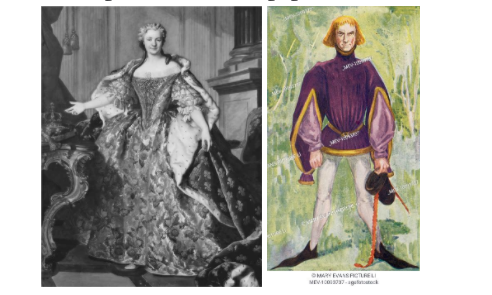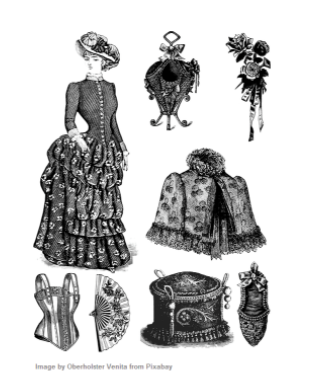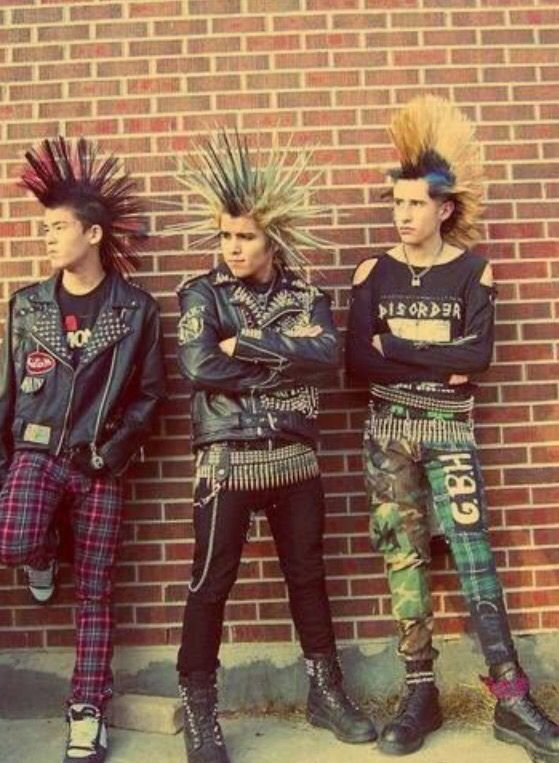Fashion is defined as “a popular trend, especially in styles of dress and ornament or manners of behavior.” It refers to the styles that are currently popular. As people evolve, so does fashion. It has greatly and undoubtedly changed over time.
In the Roman Era, (500 BC – 323 AD) individuals in Rome dressed with a social inclination. Their apparel would show their economic well-being, riches, and so on. The women would wear a “Palla” (a shawl draped over their head) over their stola (a long dress). The men would wear a Toga (a cloth draped over the body).

In the Middle Ages, (400 – 1200AD) the men and women would wear a belted tunic. The womens’ tunics would be about ankle length, and they would also wear a shawl over their heads. The people, in the Middle Ages, would use clothing color to resemble their financial status. The rich and the poor wore vastly different garments. For example, the rich women would wear layers upon layers of dresses and the men would wear tunics which were sewn up on the sides, but the poor would wear tunics that were open from hem to waist. Soon after the Norman Invasion, the fashion changed to a slight extent. Women started wearing tight-fitting gowns with long sleeves and lengthy skirts. The young men started wearing tight-fitting hose under their tunics, and the older men started wearing full-sleeved, long, gowns.

The Renaissance Period, (1350-1520) was one of the most significant periods in fashion history and it was also a period in which people took interest in their fashion and clothing styles. They would spend fortunes on clothes. Part of the reason could’ve been that the King of England, Henry VII, spent so much money on clothes, and the aristocrats would follow the king in everything he did. The clothing during this period represented the wearer’s social status.
During the periods between 1600-1900, (Elizabethan Era, Restoration Era, and the Victorian Era) there were no significant changes in fashion. The women continued wearing long, flowy gowns and the men usually wore buckled shoes, a shirt, a waistcoat, and an outer coat. The aristocrats had their own tailors and seamstresses, and everyone else bought whatever they could afford. During this period was when the Industrial Revolution (1760-1840) took place, so until then, everything was handmade, but then people came up with inventions and machines to aid them such as the sewing machine in 1790.

In the mid-19th century, the world followed the fashion of the people in Paris. Whatever people in Paris wore, the rest of the world copied. During the late- 19th century, fashion evolved to great heights. This was when Charles Frederick Worth, one of the most influential people in fashion history, was born. He was considered the first fashion designer in the world. The women would quarrel among themselves to wear his finest creations. At the time of “La Belle Epoque”, also referred to as the prewar period, the clothing style, for women, consisted of expensive and elaborately decorated dresses. These dresses consisted of many layers, petticoats, and tightly laced corsets under the dresses. The corsets were tightly-laced especially around the waist area to create the effect of a tiny waist. They would also accessorize with fancy hats.

By the 20th century, fashion has changed a good deal. The entertainment industry had influenced people and their clothing styles. Towards the beginning of the century, the clothing style became more practical and coexisted with the clothing style of dresses from the late-19th century. Fashion magazines, consisting of fashion trends, were also introduced around this time. They became very popular and one of the most popular fashion magazines was a French one titled “La Gazette Du Bonbon” When the 1910s came around, the tiny and curvy waist obsession shifted to a slim and straight waist obsession. Another famous fashion designer, Paul Poirot, helped with this shift and came up with “flapper” style dresses. Soon, World War 1 Started (1914-1918) and this had a large effect on fashion. People started to dress in more monochromatic and darker colors.

Then, in the 1920s, came the “Golden Era of French Fashion” period. This was the period between the 2 world wars. This was around when women started gaining more independence, including the right to vote. People also started going for a more flat-chested look with bob cuts rather than long hair and short skirts rather than long skirts. Mens’ fashion evolved to more of a “youthful” feel. They wore short jackets and trousers.
Then came the 1930s, which was when women started dressing in more of a elegant way but also quite the opposite. They would wear things like ankle-length dresses and evening dresses, but they would also wear sportswear. This was also around the time that women started developing an interest in sports and athletic activities.
The 1940s was when World War II started. During the war, many fashion houses in Paris had closed, so the craze shifted from Paris to London and New York. Due to the war, people had lost so much money, so handmade clothes became unaffordable.

In the 1950s, the young invested in fashion now more than ever because of the booming economy. James Dean, an American movie star, popularized the style of a combination of a T-shirt, jeans, and a leather jacket as seen in some of his movies. Film stars during that time, such as Marilyn Monroe, had a huge impact on fashion because whatever they wore, people followed them.

In the 1960s, unisex clothing became a big thing. People would wear clothing such as A-line dresses that didn’t have much body definition.

Then, from the 1970s to the 2000s, people started to have an obsession with the “punk” style. This was defined as tipped T-shirts, chains, and spiky hairdos.

In the 2000s, the fashion shifted to more of a “streetwear” style. This just consisted of comfortable clothes. People started to value comfort more in this decade and it played an important role in the way that they dressed.